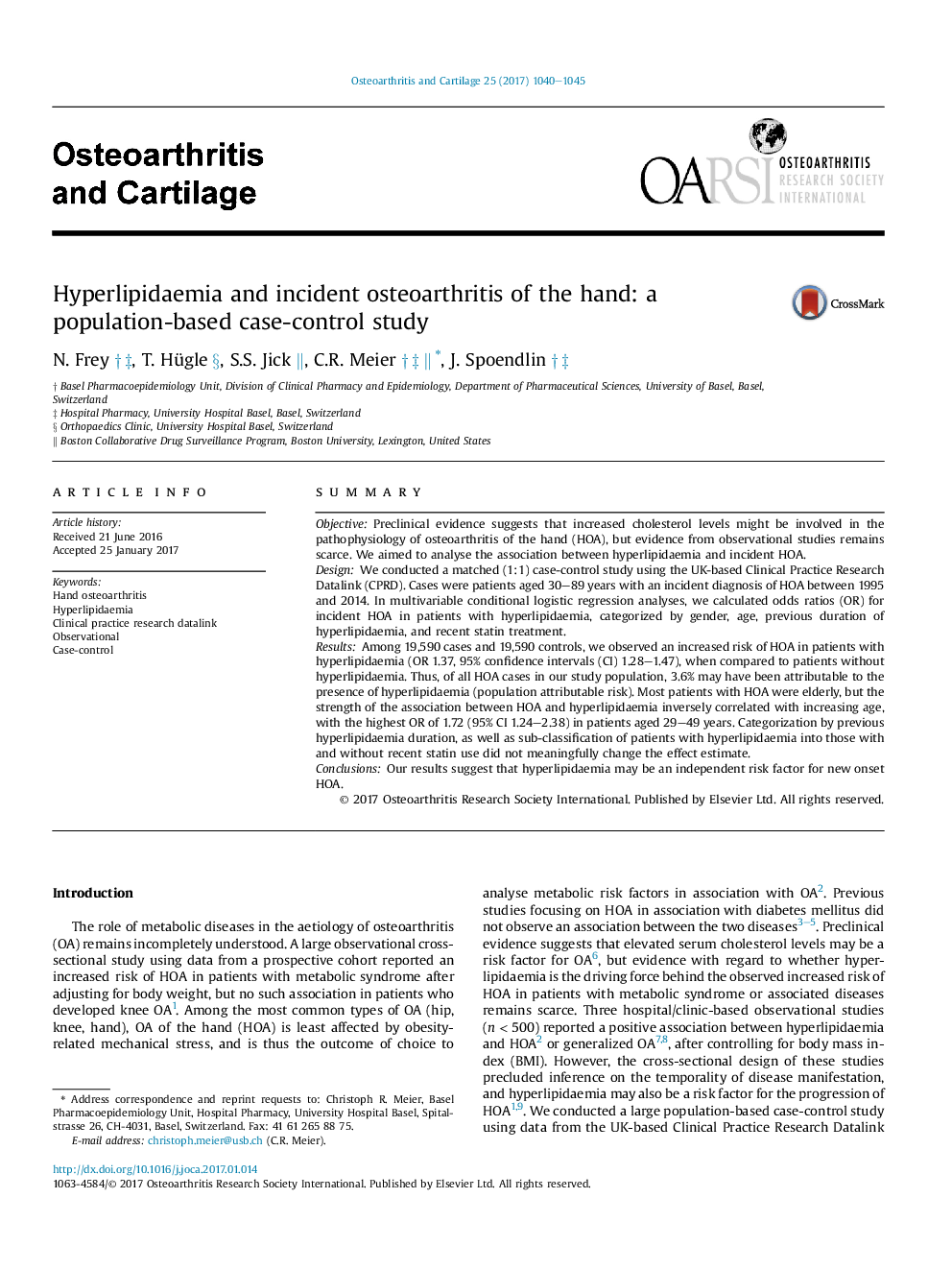| Article ID | Journal | Published Year | Pages | File Type |
|---|---|---|---|---|
| 5669303 | Osteoarthritis and Cartilage | 2017 | 6 Pages |
SummaryObjectivePreclinical evidence suggests that increased cholesterol levels might be involved in the pathophysiology of osteoarthritis of the hand (HOA), but evidence from observational studies remains scarce. We aimed to analyse the association between hyperlipidaemia and incident HOA.DesignWe conducted a matched (1:1) case-control study using the UK-based Clinical Practice Research Datalink (CPRD). Cases were patients aged 30-89 years with an incident diagnosis of HOA between 1995 and 2014. In multivariable conditional logistic regression analyses, we calculated odds ratios (OR) for incident HOA in patients with hyperlipidaemia, categorized by gender, age, previous duration of hyperlipidaemia, and recent statin treatment.ResultsAmong 19,590 cases and 19,590 controls, we observed an increased risk of HOA in patients with hyperlipidaemia (OR 1.37, 95% confidence intervals (CI) 1.28-1.47), when compared to patients without hyperlipidaemia. Thus, of all HOA cases in our study population, 3.6% may have been attributable to the presence of hyperlipidaemia (population attributable risk). Most patients with HOA were elderly, but the strength of the association between HOA and hyperlipidaemia inversely correlated with increasing age, with the highest OR of 1.72 (95% CI 1.24-2.38) in patients aged 29-49 years. Categorization by previous hyperlipidaemia duration, as well as sub-classification of patients with hyperlipidaemia into those with and without recent statin use did not meaningfully change the effect estimate.ConclusionsOur results suggest that hyperlipidaemia may be an independent risk factor for new onset HOA.
